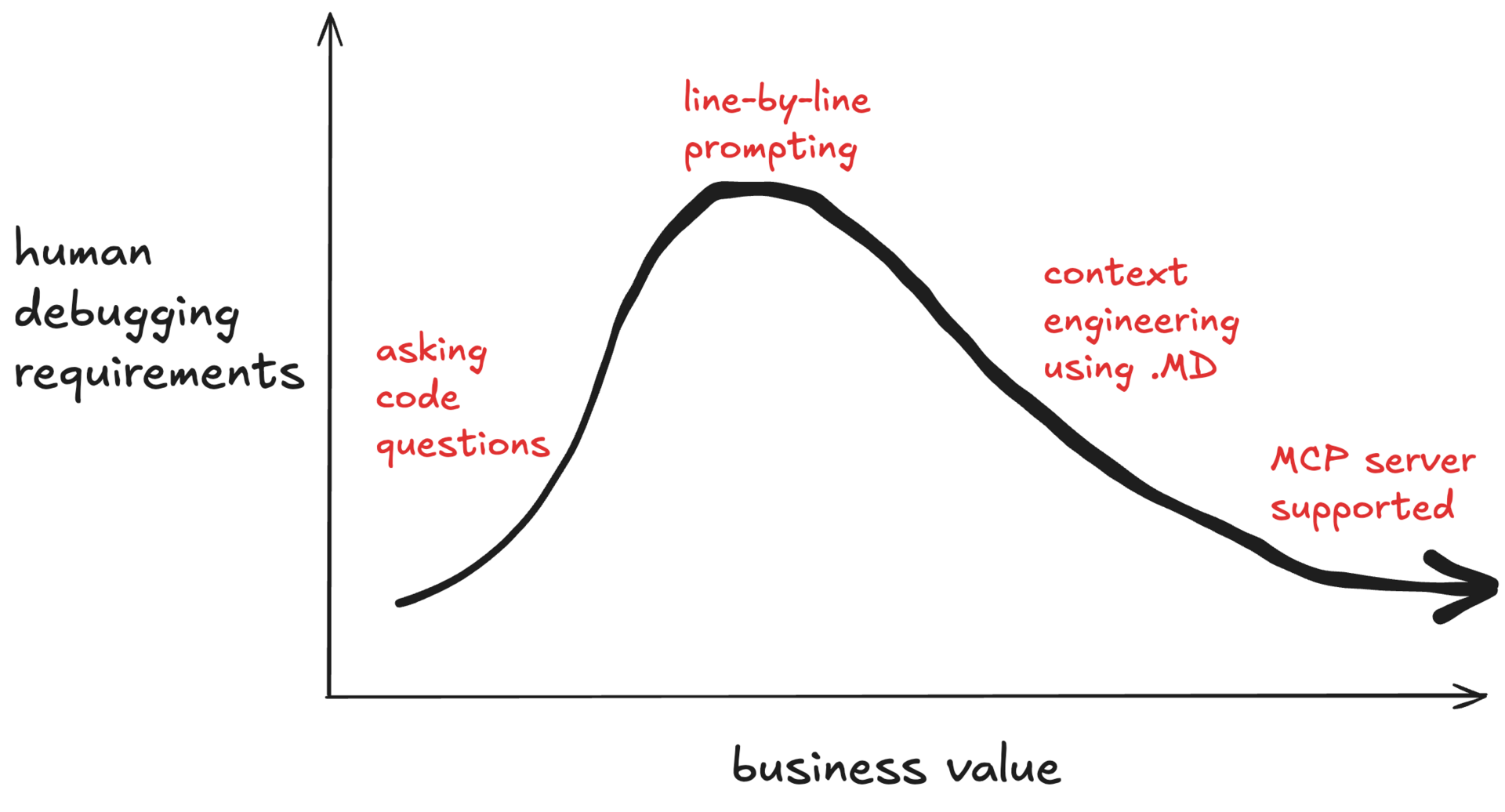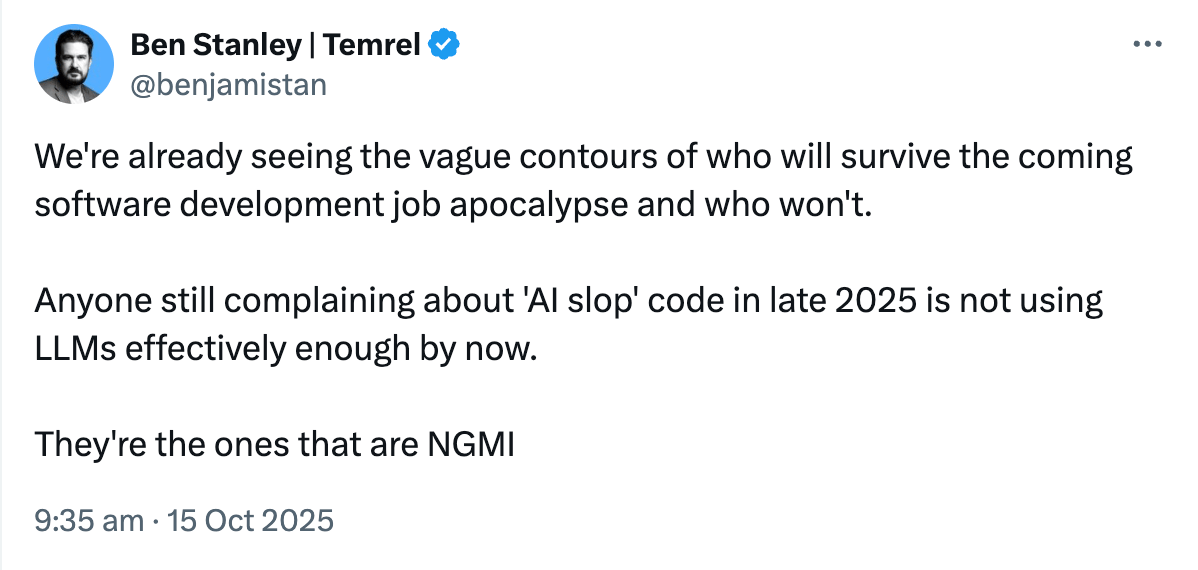

The Current Mood — Developers Are Biting Back
The backlash against AI coding has well and truly begun. All over the internet, we see comments railing against ‘AI slop code’. Business leaders too echo the sentiment: investments in AI workflows have not delivered the ROI expected of them. For software devs in particular, three drivers of this attitude are prevalent:
Humblebragging: ‘I tried coding with AI and it wasn’t as good as me’
Cope: ‘This will never replace me’.
Inexperience: Look at the chart above. There is a hill of frustration to climb before you get good enough to move seamlessly.
The truth is that over the next 5-10 years, about 80% of software developer jobs are going away forever. The only people who will survive are those that can harness these tools to show immense value now.

The AI Adoption Curve No One Talks About
The plain fact is that there is an adoption curve to vibe-coding. Logging on to ChatGPT and asking, one-shot, to code for you on a tiny use-case within your legacy app is going to create more problems than it solves.
Our graph today shows developer frustration as defined by the level of human input to debug AI-generated code over the business value delivered by AI. Everyone begins first by asking questions of AI, then starts using it to generate code. This is the peak of frustration.
If this is you, the problems will be evident:
Constant context switching
Prompt drift
High error rates
No state or memory
This is where most developers stop. And it’s where many wrongly conclude “AI can’t really help me code.”
What Happens If You Keep Going?
Once you get past this - if you do - the promised land awaits. The next step in your progression is using context via .md files and then augmenting your AI with content from MCP servers. This gives you real leverage:
Context engineering with
.mdfiles: lets you define system prompts, architectural constraints, formatting rules, naming conventions, tone, etc.MCP server-supported workflows: delegate orchestration, track context versions, and enable tool-assisted agent collaboration.
This is where:
Output becomes repeatable.
Prompting becomes architecture.
Debugging costs go down.
Business value goes up.
The Real Reason This Works
LLMs don’t fail because they can’t write good code. They fail because they lack context. Markdown context files provide a consistent cognitive frame and streamline your code’s workflow more in accordance with your existing practices and knowledge.
MCPs give structure, tooling and traceability. You’re no longer just prompting, you’re managing a system of intelligence. This is where you really take off and start delivering quality code at a velocity that no human ever achieved prior to LLMs.
A Better Plateau Awaits
Don’t stop at peak frustration, then.
It’s the hill your software dev career will die on.
Learn prompt patterns, systemise context, and lean into engineering over experimentation. The best LLM workflows feel less like magic, more like automation.
AI Isn’t Overhyped. Your Workflow Is Just Incomplete.
Developers who stop at line-by-line prompting never experience real value. Those who treat LLMs like tools - backed by structured context -build faster, cheaper, and more consistently.
The curve doesn’t flatten. It drops. But only if you keep going.
